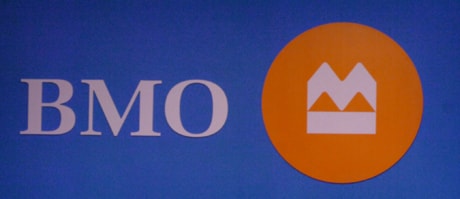TORONTO — Bank of Montreal (TSX:BMO) is cutting about 1,100 jobs after a 44 per cent drop in quarterly net income to $358 million.
The bank’s results reported Tuesday were dragged down by $118 million in job-cutting costs and by higher loan-loss provisions, largely in the United States.
The bank said the job reductions will occur across the company and will continue through the year. Cuts are expected to hit about three per cent of BMO’s 36,900-person workforce, primarily in managerial positions.
CEO Bill Downe described the move as “simplifying our management structure across our businesses and corporate support areas by reducing layers and broadening mandates.” He said future annual savings will exceed the $118 million in severance expense.
BMO Financial Group — the first of the Canadian banks to report this week — said it earned 61 cents per share in the February-April period, the second quarter of the banking year. That was down from a year-earlier profit of $642 million or $1.25 per share, despite higher profits in Canadian traditional banking and capital markets.
The results exceeded market expectations and BMO shares were up four per cent early Tuesday afternoon, gaining $1.70 to $43.26 as sentiment brightened on banks in general.
“There was nothing too troubling or surprising in BMO’s results, which will likely translate to the other banks,”commented Dundee Capital Markets analyst John Aiken.
“This will allow the banks to sustain their valuations in the near term after the strong run over the past three months.”
Excluding severance costs of $80 million after tax and an $80-million charge related to shaky capital markets, BMO had adjusted cash earnings per share of 93 cents. This topped the 91 cents projected by analysts surveyed by Thomson Reuters.
Second-quarter provisions for credit losses more than doubled from a year ago, to $372 million from $151 million, with $127 million of specific provisions in Canada and $245 million in the United States. However, provisions were down from $428 million in the first quarter.
“We expect the credit environment to continue to be challenging through 2009 as the global economy remains weak,” Downe stated in releasing what the bank characterized as “good second-quarter core results in the context of the current market environment.”
Canadian personal and commercial banking booked year-over-year growth of eight per cent in revenue and nine per cent in net income, to $350 million. BMO Capital Markets increased its revenue by 17 per cent and its earnings by 33 per cent to $249 million.
At BMO’s Chicago-based Harris Bank, revenue fell 7.8 per cent and net income was a bare US$21 million, down 31 per cent from a year ago as “the weak credit environment continues to affect results.”
The BMO private client group earned $62 million, down from $107 million, “impacted by difficult equity markets and a low-interest-rate environment.” On April 1, BMO completed the $300-million acquisition of the Canadian life insurance operation of troubled American International Group, and all of the bank’s insurance businesses now operate within the private client group.
Return on equity, a key measure of profitability, slumped to 8.1 per cent, compared with 17.9 per cent per cent in the second quarter of last year. But BMO’s Tier 1 capital ratio, a key indicator of financial solidity, increased to 10.7 per cent from 9.4 per cent.
The bank maintained its quarterly divided of 70 cents per share.
“BMO’s results were solid and better than most market participants anticipated (us included),” commented Dundee Capital’s Aiken, who still rates the bank’s shares a “sell” after their rise of almost 80 per cent since early March.
“We remain concerned with BMO’s credit exposure and believe that its 77 per cent (dividend) payout ratio represents incremental risk that is not reflected in its current share price,” Aiken said.
He added that the main stock-price factor now is whether lower loan-loss provisions can be sustained or if the current level is “a plateau before deterioration in commercial and corporate credit creates the next step in provision growth.”
BMO said it expects the Canadian economy will contract 2.5 per cent this year, “though the rate of decline should diminish as the year progresses.”
